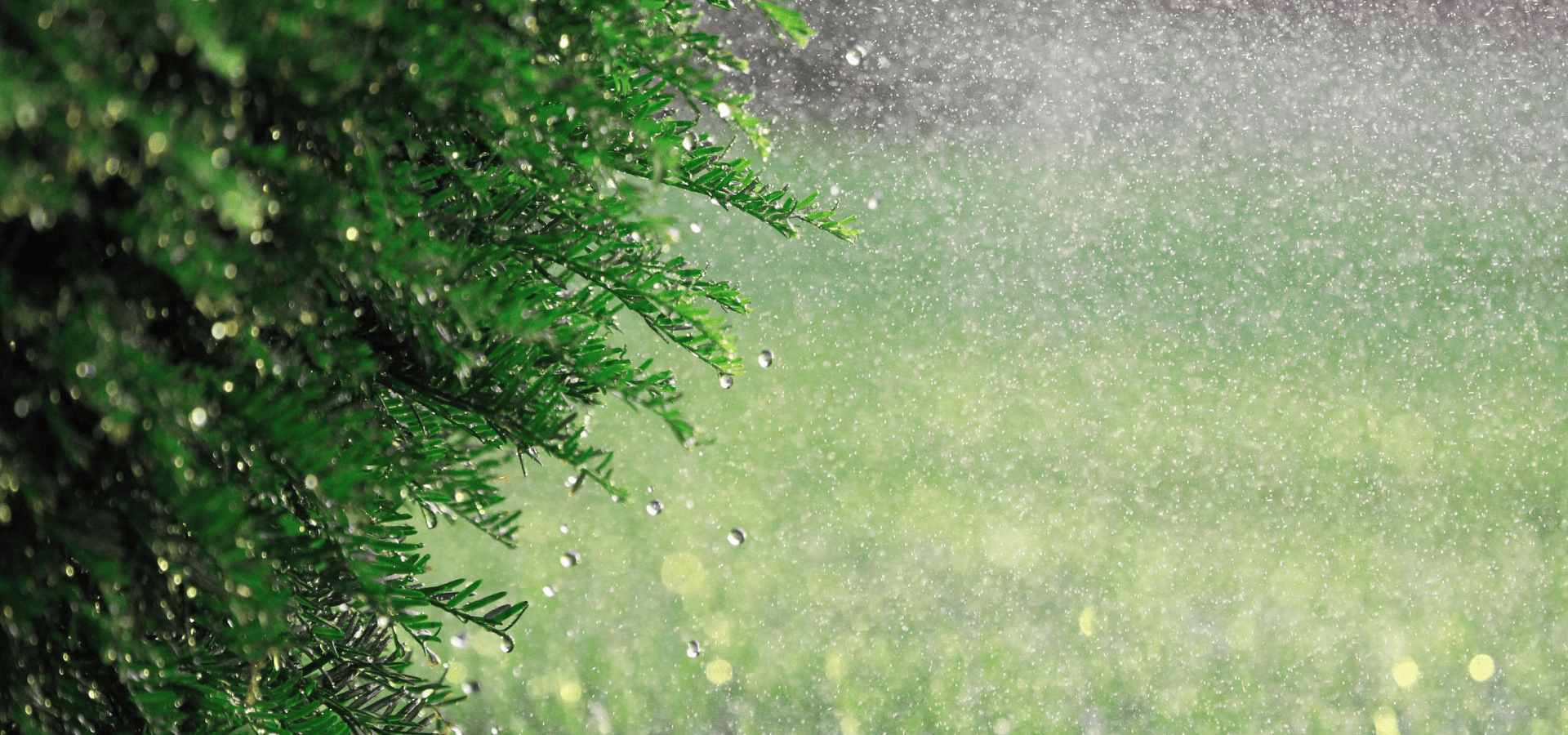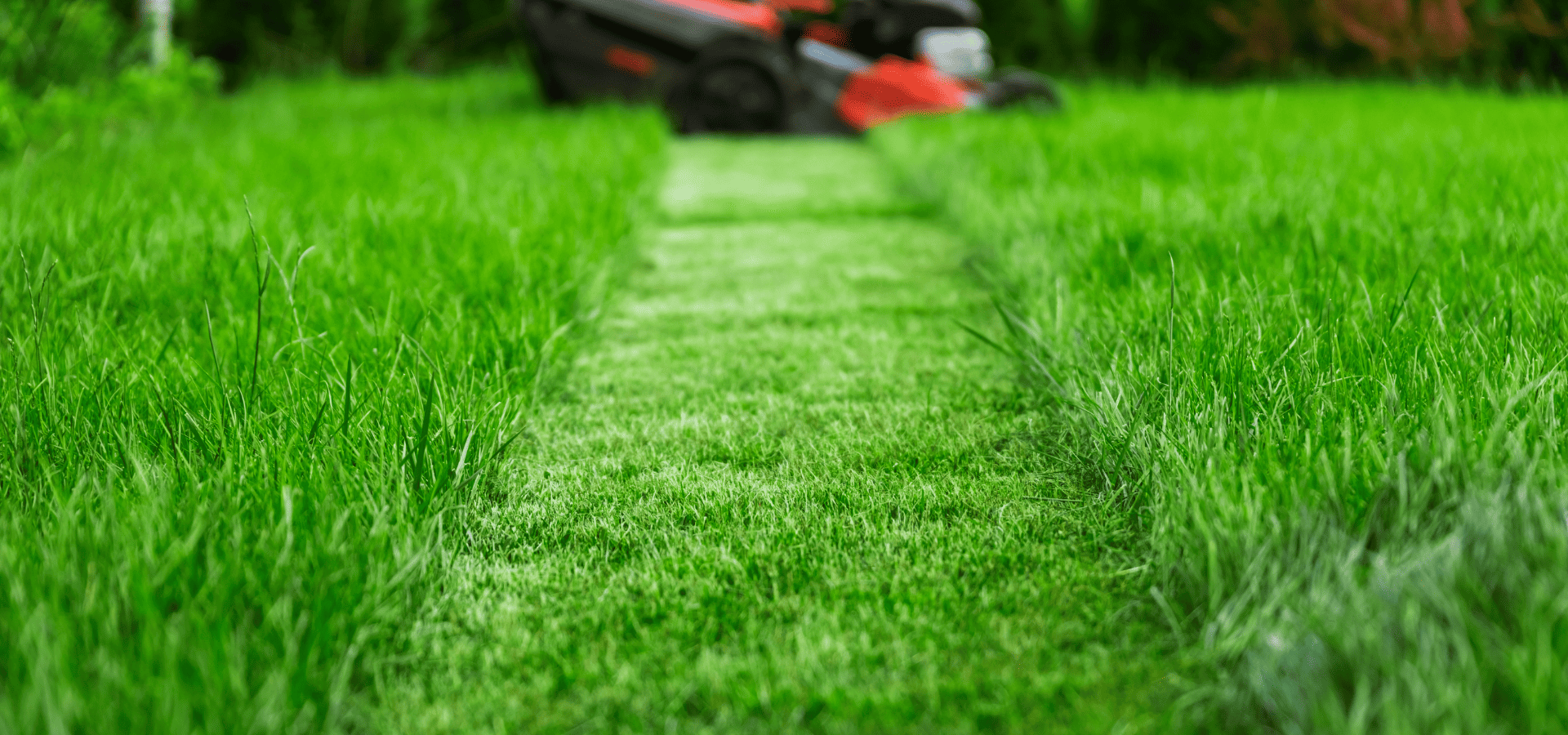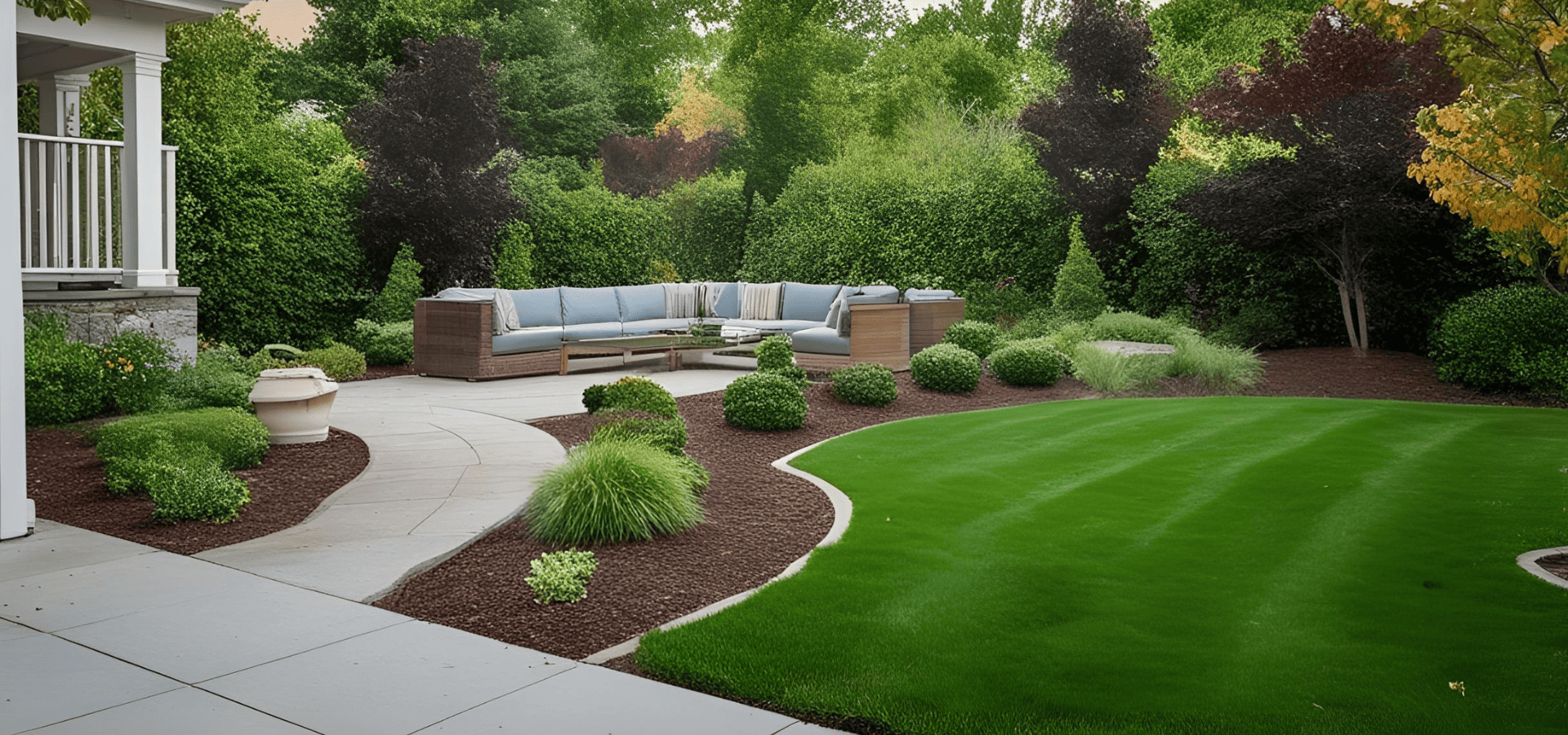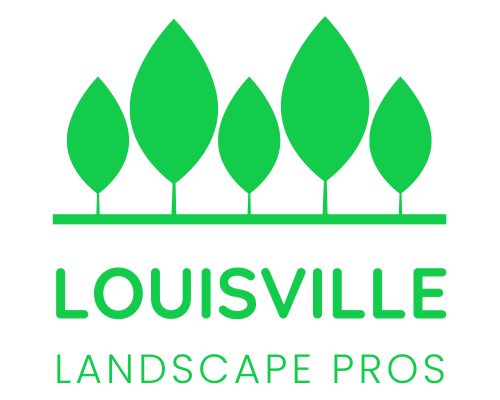Outdoor Living Spaces Landscaping Guide
Beautiful landscapes and lush gardens are great, but they’re only pleasing to the eye.
To make the most out of your outdoor space, you need outdoor living spaces to add more functionality and allow your outdoor space to be used for a variety of activities.
Outdoor living spaces like patios, outdoor kitchens, and more, allow you to enjoy yourself more and be more comfortable in your outdoor space.
If you'd like to have someone do it for you, simply give Louisville Landscape Pros a call.
Otherwise, if you’re looking to add an outdoor living space, or even a few to your backyard, you’re in the right place. We’re going to be covering how to go about planning and adding an outdoor living space to your landscape.
1. What Different Outdoor Living Spaces Are There?
First off, you’ll need to know what’s available to you so that you can choose the most suitable one for your needs. Here are the various outdoor living spaces available.
Patios
Patios are the most commonly seen outdoor living space.
They’re usually connected to your home and are meant to pretty much extend your living space into the outdoors. So it’s kind of like having an outdoor room for your home.
Patios can be used for pretty much any purpose you want. A simply refers to a hard-surfaced outdoor space, basically a space with a hard surface you created, where you can build whatever you want on the hard surface.
You can build an outdoor kitchen, a bar, a fire pit, and just about whatever you want.
Decks
Decks function like patios, serving as an extension of your home, but made of wood.
The main differences are that decks are made of wood or composite, so they have different aesthetics, and they can be elevated.
So if your home isn’t flat on the ground but elevated, you’ll have to build a deck to either connect to the ground or just use the deck as your outdoor living space directly.
Outdoor Kitchens
Another commonly seen outdoor living space, outdoor kitchens bring a whole new level of functionality to your space, allowing you to not just cook, but also cook food that you couldn’t do indoors because of the smoke.
Outdoor kitchens can be built on both patios and decks, but for decks, being wood, they may not be able to withstand as much weight as patios, so they may need to be reinforced.
Pergolas & Gazebos
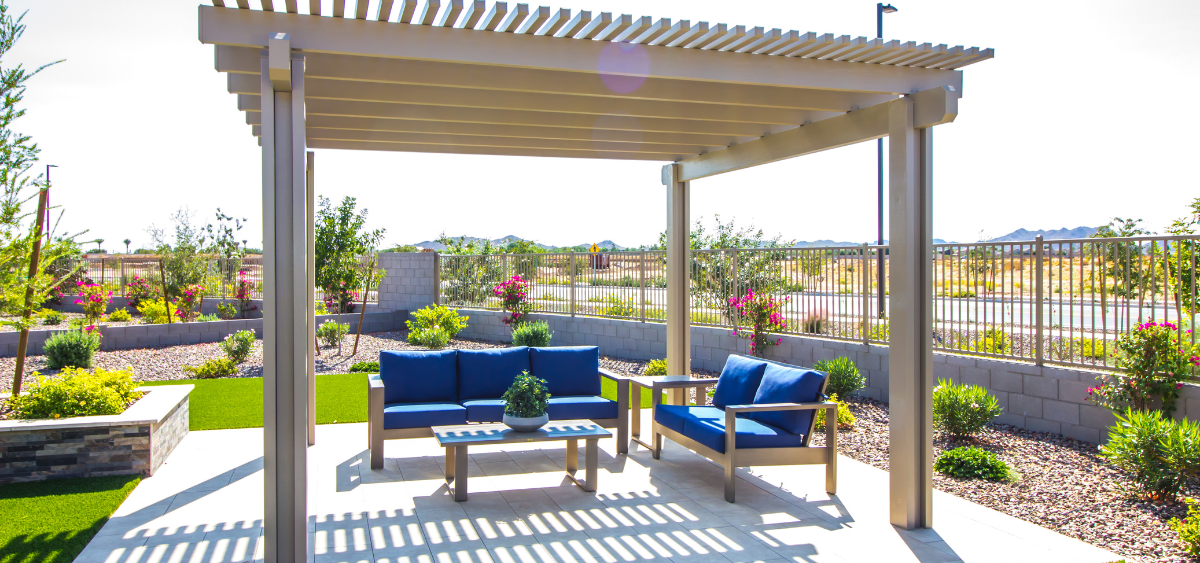
Pergolas and gazebos are also commonly seen outdoor living spaces.
Pergolas are usually built from wood, and their roof is usually lines of wood with spaces in between, which means they aren’t shaded unless you add something like a canopy yourself.
Gazebos, on the other hand, look like huts. Their roof is usually pointy or triangular and quite solid, to the point where it almost looks like a mini home.
Outdoor Living Rooms
As the name suggests, you’re essentially creating another living room outside your home, where people can sit and gather around. You can even add a TV.
Fire Pits/Fireplaces
Everyone knows what these are. Fireplaces make your landscape really cozy on cooler days and can be really fun to gather around and have fun or just chat.
And of course, don’t forget the s’mores you can make!
Outdoor Bars
Outdoor bars aren’t as commonly seen, but they’re great for entertaining guests, so if you’re someone who frequently has people over, an outdoor bar can be a worthwhile addition.
Verandas
Verandas aren’t exactly a structure on their own, but rather, a term used to refer to an outdoor space connected to your home that’s permanently sheltered.
Garden Rooms
Finally, garden rooms are essentially standalone rooms in the middle of your garden or landscape, strategically placed and built in a way that allows you to admire your landscape.
These rooms tend to have glass doors and are sometimes made mostly out of glass walls to allow you to see as much of your garden as possible.
2. Planning Your Outdoor Living Spaces
Alright, so now that you know your options, it’s time to decide which ones you want to have in your space.
Here are some important considerations.
Purpose
First off, consider what you want to be using your outdoor space for. Everybody, even the most introverted people, will have guests over at times. But is that going to be your main purpose?
Are you someone who likes to entertain guests and host many parties, or do you like to keep to yourself and enjoy your private space?
Or maybe you’re someone who loves barbecues.
Figure out what matters most to you and what you’re going to be using your space for the majority of the time, and then choose your outdoor living spaces according to that.
Your Landscaping Style
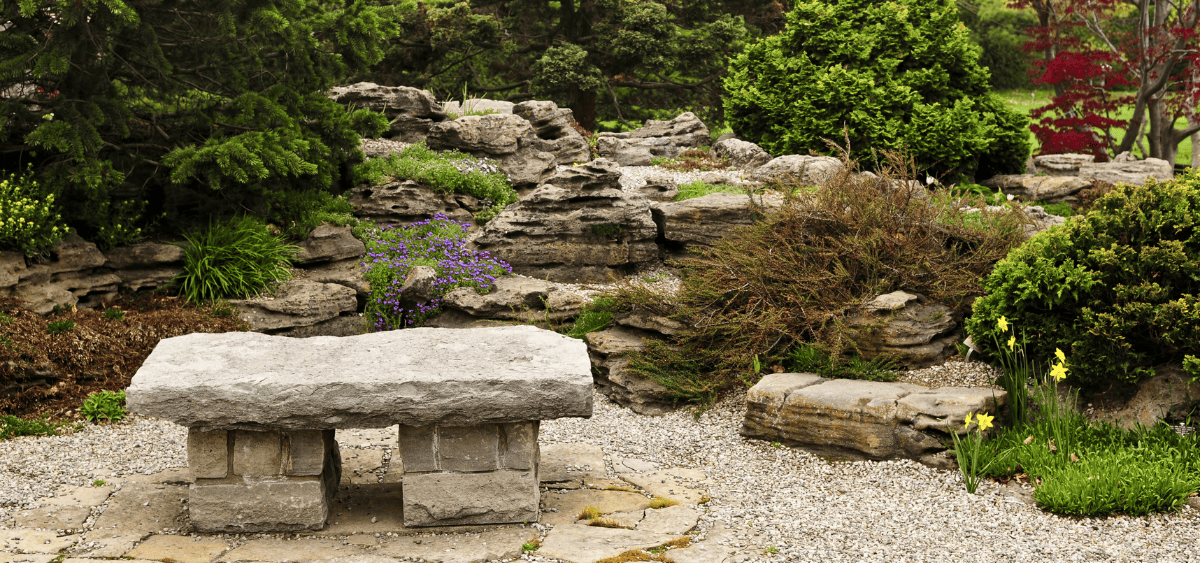
Your landscaping style is actually going to play a big part in your choice of outdoor living spaces.
For example, a pergola would look quite out of place in a minimalist landscape. And an outdoor kitchen wouldn’t look quite right in a Japanese garden.
Of course, you can try to customize the colors and style of the outdoor living space to suit your landscaping style, but there’s only so much you can do.
An outdoor living space will add lots of functionality to your space, but there’s not much point in that if you end up ruining your aesthetic and making your outdoor space look weird or disjointed.
So consider carefully whether your choice will fit your landscaping style.
Budget
Finally, outdoor living spaces can be pretty substantial investments, and even more so if you’re choosing higher-end materials.
They’re worth the investment and can help increase the resale value of your home. But the fact remains that they can take a huge chunk out of your wallet.
As such, it’s a good idea to map out the costs and make sure you have enough for the project. If you don’t have enough, you can consider DIYing certain parts or splitting the project up into phases.
For example, if you can’t build the entire outdoor kitchen at once, you can start with just the flooring and the grill, then slowly add other stuff like the oven, the sink, the fridge, and so on.
3. Choosing The Materials
Alright, so you know what your options are, and you know which ones you want. The last thing to decide on is the materials you’re going to use.
Here’s what you’ll be choosing from.
Pavers
Pavers are the most commonly used for outdoor living spaces due to their ease of installation and reasonable prices.
When there are repairs or replacements that need to be done, they can be easily remedied by just replacing the paver that’s damaged.
Note that pavers refer to the shape of the block itself, the material itself can vary, from concrete to brick and flagstone.
Brick
One of the oldest construction materials, brick is easy to install, durable, and doesn’t require much maintenance.
Brick may not be visually stunning, but it has a soft, timeless appeal, and price-wise, it’s considered to be relatively affordable.
Concrete
Concrete is one of the cheapest materials. However, in its natural form, concrete can be rather unsightly, so additional finishes like stamping or staining are usually applied.
Still, even factoring in the cost of the finishes, concrete remains very friendly on your wallet.
Concrete is also quite robust and long-lasting.
The catch is that concrete can crack when subjected to freeze-thaw cycles, and concrete requires some skill to install, as installation can be tricky.
As such, you may end up having to hire someone to perform the installation, which will add to the overall costs.
Natural Stone
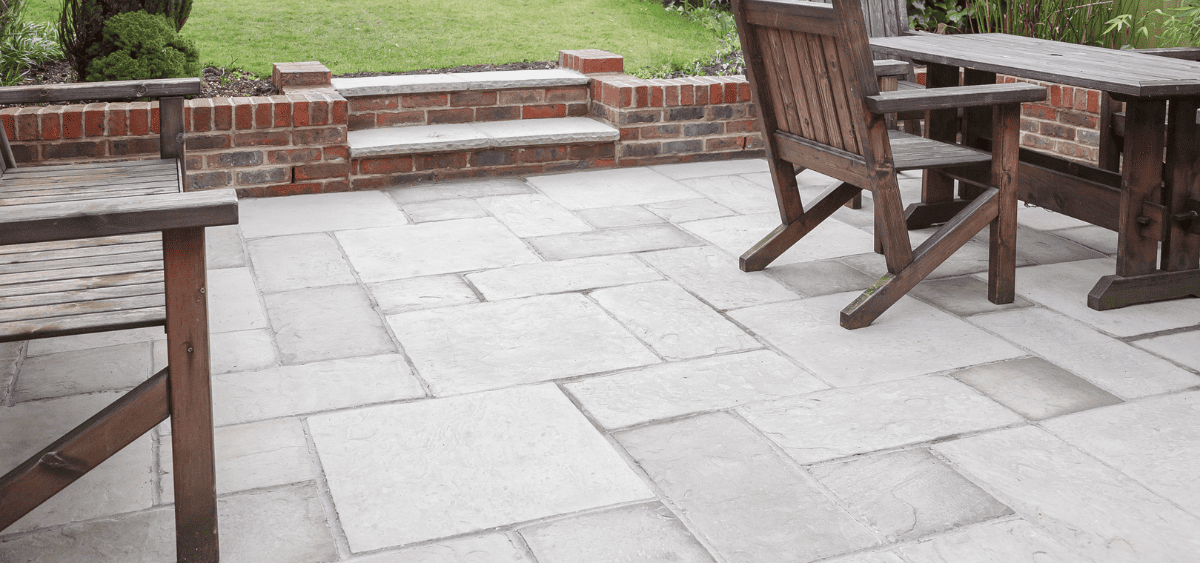
Natural stones like limestone and flagstone, with their natural beauty, bring a sophisticated, elegant vibe to your outdoor living space.
Natural stone will usually be on the pricier end due to the production process and more complicated installation.
Nonetheless, they bring a high-end beauty to your space that few other materials can. They also have long lifespans and are quite tough, so you’ll be getting your money’s worth.
Composite
Lastly, composite is a type of material that’s usually made with a blend of recycled materials like recycled plastic and wood.
While it may not sound very dependable, composite is actually made to be extremely durable and have very long lifespans. They’re also quite versatile and can mimic wood and even natural stones.
So when you choose composite, not only do you get an extremely robust material that doesn’t require much maintenance, but you’re doing your part for the environment.
The only downside to composite is that it’s on the higher end. It won’t burn as huge a hole as natural stone, but it’s definitely going to cost you more than materials like brick and concrete.
Conclusion
Now that you know which outdoor living spaces to incorporate and which materials to use, you’re all set to start bringing more functionality into your outdoor space.
As a final tip to end off, don’t forget to factor in privacy. You don’t want to build the outdoor living space out only to realize that you can’t enjoy it at all because all your neighbors can see your every move.
Plan ahead and position your living space in a more private area, and if that’s not possible, then at least find some way to have privacy, whether it’s with privacy screens or tall trees.
You might also like
